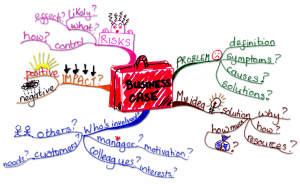Build a Better Buyer Business Case
Mike Schultz and John Doerr of the RAIN Groupwrote an excellent white paper recently on What Sales Winners Do Differently. In this paper they did some interesting research around what winners of more than 700 B-to-B sales opportunities did differently. The three things they outlined that were significantly different were that winners:
- “Connect the dots between customer needs and their company’s products and services and they connected personally with the buyer more often.”
- “Convince buyers they can achieve maximum return, that the risks are minimal, and that the seller is the best choice among all the options.”
- “Collaborate through behavior – they are perceived to be responsive, proactive and easy to buy from. Buyers actually believe that winners actually collaborate with them during their buying process and perceived these sellers to be integral to their success.”
A real eye-opener for me was their discovery that there has been a shift away from the prevalent use of the words “problem” and “pain”. They said that “those words all too often drive sellers to employ find-out-what’s-wrong-and-fix-it thinking.” OK, so the shift comes when “The sellers focus much more on the positives – goals, aspirations, and possibilities achievable by the buyer, even if the buyer doesn’t know it yet. Sellers who focus on aspirations as well as afflictions are able to directly influence the buyer’s agenda by inspiring them with possibilities they hadn’t been considering, but should be.”
Another really important finding was in the area of maximizing return and minimizing risk. They indicated that “if the buyer isn’t convinced of both maximum return and minimal risk together, the seller will lose to “no decision”. Boy, does that explain why a lot of opportunities wind up in a no-decision! That makes perfect sense to me. It’s clear that if the seller doesn’t show the buyer that they will achieve maximum return on their investment of not only money, but human resources and time as well, then the buyer won’t be convinced that it is worth the effort. Equally, if the seller doesn’t reduce the amount of risk for the buyer, then their fear of failure, and maybe even the loss of their job, will keep them from moving forward.
That brings us to the title of this article which is, sellers need to build a better buyer business case that addresses all of the items mentioned above, which are shown in the illustration. I believe that a lot of businesses don’t do a good enough job of building a good business case. First, because it usually is a complex process and second, because it is often time consuming. Also, a lot of organizations don’t spend the time to train their sales people on how to build a good business case and what constitutes a good business case. Business cases will change to fit each unique customer, but if organizations capitalize on the tribal knowledge they have around opportunities they have won in the past and how they went about creating an effective business case to win them, then that would go a long way to help their people create their own business case.
The third area that the RAIN Group talked about was Collaborating with the buyer. This is really where the business case comes into play. Buyers need your help to build a case for your solution so they can justify this to their senior management. This clearly helps them articulate what the problem is, who the stakeholders are, why it needs to be fixed and fixed now (as opposed to later), what the risks are, what the impact is (both negative and positive) and then what the desired outcome would look like. This creates a relationship with the buyer that you, the seller, are working with them to achieve a “common goal”. This type of collaboration between the seller and the buyer goes a long way to creating the type of buyer/seller relationship that would be hard to unseat by a competitor.
When organizations spend the time to build an effective buyer business case, not only does it help the buyer justify the purchase, but it also goes a long way in helping educate the seller organization about:
- What steps are involved in a successful sales process
- What objections or pitfalls might come up and how to respond to them
- How their service or solution actually helps their customers solve a problem
- Helping organizations understand how they address their customers’ problems and provide value
- How, after a couple of these business cases have been successfully created, they can provide a roadmap and template to create new ones and, therefore, reduce the sales cycle
I want to thank Mike Schultz and John Doerr of the RAIN Group again for allowing me to use their findings and their excellent research and inspiration for this article.
If you take the time to build a better buyer business case, then it will have a positive impact on your buyers’, your sales people and your business outcomes. At least that’s the way I see it, what say you?
About the author:
Chuck Carey is an accomplished sales, marketing and business executive with more than 40 years of experience in the information technology industry. Chuck’s vast knowledge of the problems facing all types of organizations around identifying and capturing corporate knowledge makes him ideally suited to work with and consult in that area. If you would like to see if Chuck can help you and your organization please contact him through this website.


